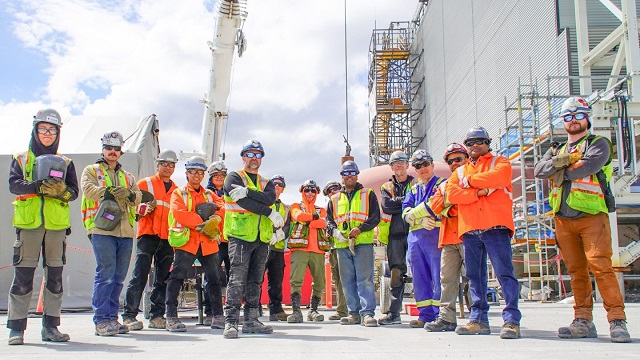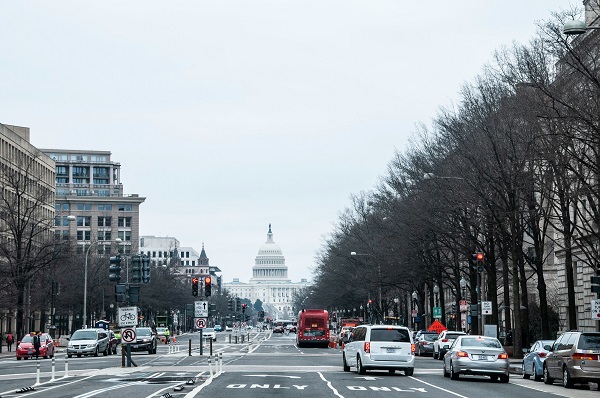Alberta
Any Downturn in Alberta’s Economy Would Inevitably Drag Canada’s Down With It

From the Frontier Centre for Public Policy
By Troy Media
Is anyone paying attention?
Canada is heading straight for an economic iceberg, and the rest of the country doesn’t seem to grasp the gravity of the situation. Alberta – long the engine of Canada’s prosperity thanks to its oil and gas sector – is facing a serious decline because the Trudeau government is obsessed with its net-zero policies. And if Alberta falters, the ripple effects will drag down the entire nation. But are we too preoccupied with federal climate targets to recognize the risks staring us in the face?
The Trudeau government’s push for net-zero emissions by 2050 may look noble on paper, but the real-world cost could be catastrophic. The numbers don’t lie: according to a recent column by Troy Media contributor Lennie Kaplan, Alberta’s oil production could drop by a staggering 54 percent by 2050. That’s not just a provincial problem; it’s a national economic emergency waiting to happen.
Let’s cut through the jargon. Alberta makes up about 15 percent of Canada’s GDP. If Alberta’s economy shrinks by $32 billion – as projected – it would trigger a 1.2 percent drop in Canada’s GDP. For context, that’s a multi-billion-dollar hole in a country whose economy is, itself, already in severe decline.
Does Ottawa think a shrinking economy will put us in a stronger position to innovate and grow? Or are they content with turning Alberta into a sacrificial lamb on the altar of climate policy, ignoring the fact that this will make Canada less competitive on the world stage?
Then there’s the job market. Alberta’s energy sector employs thousands and indirectly supports tens of thousands more across Canada. By 2050, again according to Kaplan, Alberta could shed 198,000 jobs – five percent of its workforce. These aren’t just oil rig workers; they’re engineers, construction crews, transport workers, and more.
It gets worse. When Alberta’s economy shrinks, industries from coast to coast that depend on Alberta’s vitality will also take a hit. If even 10 to 15 percent of those job losses trickle across the country, we’re looking at another 20,000 to 30,000 Canadians joining the unemployment line. Yet, where is the urgency to address this looming crisis?
Alberta isn’t just a provincial powerhouse – it’s also a major contributor to federal revenues. Between 2025 and 2050, the province’s contributions could drop by $221 billion due to declining oil and gas revenues. That’s less money for healthcare, infrastructure, and social programs from coast to coast.
For a federal government that already struggles to balance its books, the loss of up to $40 billion in federal tax contributions from Alberta is a fiscal disaster in the making. Where do they expect to make up that shortfall? Higher taxes? Slashed services? Or maybe another round of federal borrowing to kick the can down the road?
Alberta’s oil and gas isn’t just a provincial asset – it’s a critical part of Canada’s trade balance. In 2022, energy exports made up 20 percent of Canada’s total exports. Cut that by more than half, and you’re gutting Canada’s international trade position.
A $70 to 80 billion hit to export revenue could balloon the country’s trade deficit, further devaluing the Canadian dollar and making imports more expensive. In short, this isn’t just bad news for Alberta – it’s an economic calamity that could send shockwaves through every corner of the country.
And let’s not forget the federal equalization program. Alberta has long been a “have” province, contributing far more than it gets back. But if Alberta’s economy falters, it could soon be knocking on Ottawa’s door for handouts.
Imagine the political firestorm if Alberta becomes a “have-not” province, competing for federal support with the very provinces that have relied on its success. The strain on equalization could pit regions against each other, creating a toxic political environment when unity is more crucial than ever.
Does Ottawa even care?
Alberta’s decline isn’t just Alberta’s problem. It’s a Canadian problem. The Trudeau government’s climate obsession needs to take this into account. We cannot afford to sacrifice Alberta’s economic engine without dragging the rest of the country down with it.
What’s the plan to balance climate goals with economic reality? So far, there’s been little more than vague promises and short-term thinking. If Ottawa doesn’t wake up to the real-world consequences of Alberta’s decline, we’re all in for a harsh economic reckoning.
It’s time for our leaders to prioritize pragmatic solutions over virtue signalling. Because if Alberta goes down, the rest of Canada won’t be far behind.
First published here.
Troy Media is an editorial content provider to media outlets and its own hosted community news outlets across Canada.
2025 Federal Election
Next federal government should recognize Alberta’s important role in the federation

From the Fraser Institute
By Tegan Hill
With the tariff war continuing and the federal election underway, Canadians should understand what the last federal government seemingly did not—a strong Alberta makes for a stronger Canada.
And yet, current federal policies disproportionately and negatively impact the province. The list includes Bill C-69 (which imposes complex, uncertain and onerous review requirements on major energy projects), Bill C-48 (which bans large oil tankers off British Columbia’s northern coast and limits access to Asian markets), an arbitrary cap on oil and gas emissions, numerous other “net-zero” targets, and so on.
Meanwhile, Albertans contribute significantly more to federal revenues and national programs than they receive back in spending on transfers and programs including the Canada Pension Plan (CPP) because Alberta has relatively high rates of employment, higher average incomes and a younger population.
For instance, since 1976 Alberta’s employment rate (the number of employed people as a share of the population 15 years of age and over) has averaged 67.4 per cent compared to 59.7 per cent in the rest of Canada, and annual market income (including employment and investment income) has exceeded that in the other provinces by $10,918 (on average).
As a result, Alberta’s total net contribution to federal finances (total federal taxes and payments paid by Albertans minus federal money spent or transferred to Albertans) was $244.6 billion from 2007 to 2022—more than five times as much as the net contribution from British Columbians or Ontarians. That’s a massive outsized contribution given Alberta’s population, which is smaller than B.C. and much smaller than Ontario.
Albertans’ net contribution to the CPP is particularly significant. From 1981 to 2022, Alberta workers contributed 14.4 per cent (on average) of total CPP payments paid to retirees in Canada while retirees in the province received only 10.0 per cent of the payments. Albertans made a cumulative net contribution to the CPP (the difference between total CPP contributions made by Albertans and CPP benefits paid to retirees in Alberta) of $53.6 billion over the period—approximately six times greater than the net contribution of B.C., the only other net contributing province to the CPP. Indeed, only two of the nine provinces that participate in the CPP contribute more in payroll taxes to the program than their residents receive back in benefits.
So what would happen if Alberta withdrew from the CPP?
For starters, the basic CPP contribution rate of 9.9 per cent (typically deducted from our paycheques) for Canadians outside Alberta (excluding Quebec) would have to increase for the program to remain sustainable. For a new standalone plan in Alberta, the rate would likely be lower, with estimates ranging from 5.85 per cent to 8.2 per cent. In other words, based on these estimates, if Alberta withdrew from the CPP, Alberta workers could receive the same retirement benefits but at a lower cost (i.e. lower payroll tax) than other Canadians while the payroll tax would have to increase for the rest of the country while the benefits remained the same.
Finally, despite any claims to the contrary, according to Statistics Canada, Alberta’s demographic advantage, which fuels its outsized contribution to the CPP, will only widen in the years ahead. Alberta will likely maintain relatively high employment rates and continue to welcome workers from across Canada and around the world. And considering Alberta recorded the highest average inflation-adjusted economic growth in Canada since 1981, with Albertans’ inflation-adjusted market income exceeding the average of the other provinces every year since 1971, Albertans will likely continue to pay an outsized portion for the CPP. Of course, the idea for Alberta to withdraw from the CPP and create its own provincial plan isn’t new. In 2001, several notable public figures, including Stephen Harper, wrote the famous Alberta “firewall” letter suggesting the province should take control of its future after being marginalized by the federal government.
The next federal government—whoever that may be—should understand Alberta’s crucial role in the federation. For a stronger Canada, especially during uncertain times, Ottawa should support a strong Alberta including its energy industry.
Alberta
Province announces plans for nine new ‘urgent care centres’ – redirecting 200,000 hospital visits

Expanding urgent care across Alberta
If passed, Budget 2025 includes $17 million in planning funds to support the development of urgent care facilities across the province.
As Alberta’s population grows, so does the demand for health care. In response, the government is making significant investments to ensure every Albertan has access to high-quality care close to home. Currently, more than 35 per cent of emergency department visits are for non-life-threatening conditions that could be treated at urgent care centres. By expanding these centres, Alberta’s government is enhancing the health care system and improving access to timely care.
If passed, Budget 2025 includes $15 million to support plans for eight new urgent care centres and an additional $2 million in planning funds for an integrated primary and urgent care facility in Airdrie. These investments will help redirect up to 200,000 lower-acuity emergency department visits annually, freeing up capacity for life-threatening cases, reducing wait times and improving access to care for Albertans.
“More people are choosing to call Alberta home, which is why we are taking action to build capacity across the health care system. Urgent care centres help bridge the gap between primary care and emergency departments, providing timely care for non-life-threatening conditions.”
“Our team at Infrastructure is fully committed to leading the important task of planning these eight new urgent care facilities across the province. Investments into facilities like these help strengthen our communities by alleviating strains on emergency departments and enhance access to care. I am looking forward to the important work ahead.”
The locations for the eight new urgent care centres were selected based on current and projected increases in demand for lower-acuity care at emergency departments. The new facilities will be in west Edmonton, south Edmonton, Westview (Stony Plain/Spruce Grove), east Calgary, Lethbridge, Medicine Hat, Cold Lake and Fort McMurray.
“Too many Albertans, especially those living in rural communities, are travelling significant distances to receive care. Advancing plans for new urgent care centres will build capacity across the health care system.”
“Additional urgent care centres across Alberta will give Albertans more options for accessing the right level of care when it’s needed. This is a necessary and substantial investment that will eventually ease some of the pressures on our emergency departments.”
The remaining $2 million will support planning for One Health Airdrie’s integrated primary and urgent care facility. The operating model, approved last fall, will see One Health Airdrie as the primary care operator, while urgent care services will be publicly funded and operated by a provider selected through a competitive process.
“Our new Airdrie facility, offering integrated primary and urgent care, will provide same-day access to approximately 30,000 primary care patients and increase urgent care capacity by around 200 per cent, benefiting the entire community and surrounding areas. We are very excited.”
Alberta’s government will continue to make smart, strategic investments in health facilities to support the delivery of publicly funded health programs and services to ensure Albertans have access to the care they need, when and where they need it.
Budget 2025 is meeting the challenge faced by Alberta with continued investments in education and health, lower taxes for families and a focus on the economy.
Quick facts
- The $2 million in planning funds for One Health Airdrie are part of a total $24-million investment to advance planning on several health capital initiatives across the province through Budget 2025.
- Alberta’s population is growing, and visits to emergency departments are projected to increase by 27 per cent by 2038.
- Last year, Alberta’s government provided $8.4 million for renovations to the existing Airdrie Community Health Centre.
Related information
-

 Uncategorized14 hours ago
Uncategorized14 hours agoPoilievre on 2025 Election Interference – Carney sill hasn’t fired Liberal MP in Chinese election interference scandal
-

 Business1 day ago
Business1 day agoCuba has lost 24% of it’s population to emigration in the last 4 years
-

 2025 Federal Election2 days ago
2025 Federal Election2 days agoCanadian Banks Tied to Chinese Fentanyl Laundering Risk U.S. Treasury Sanctions After Cartel Terror Designation
-

 Automotive2 days ago
Automotive2 days agoTrump warns U.S. automakers: Do not raise prices in response to tariffs
-

 Business2 days ago
Business2 days agoTariff-driven increase of U.S. manufacturing investment would face dearth of workers
-

 International1 day ago
International1 day agoTrump signs executive order to make Washington D.C. “safe and beautiful”
-

 2025 Federal Election15 hours ago
2025 Federal Election15 hours ago2025 Election Interference – CCP Bounty on Conservative Candidate – Carney Says Nothing
-

 Education2 days ago
Education2 days agoOur Kids Are Struggling To Read. Phonics Is The Easy Fix





